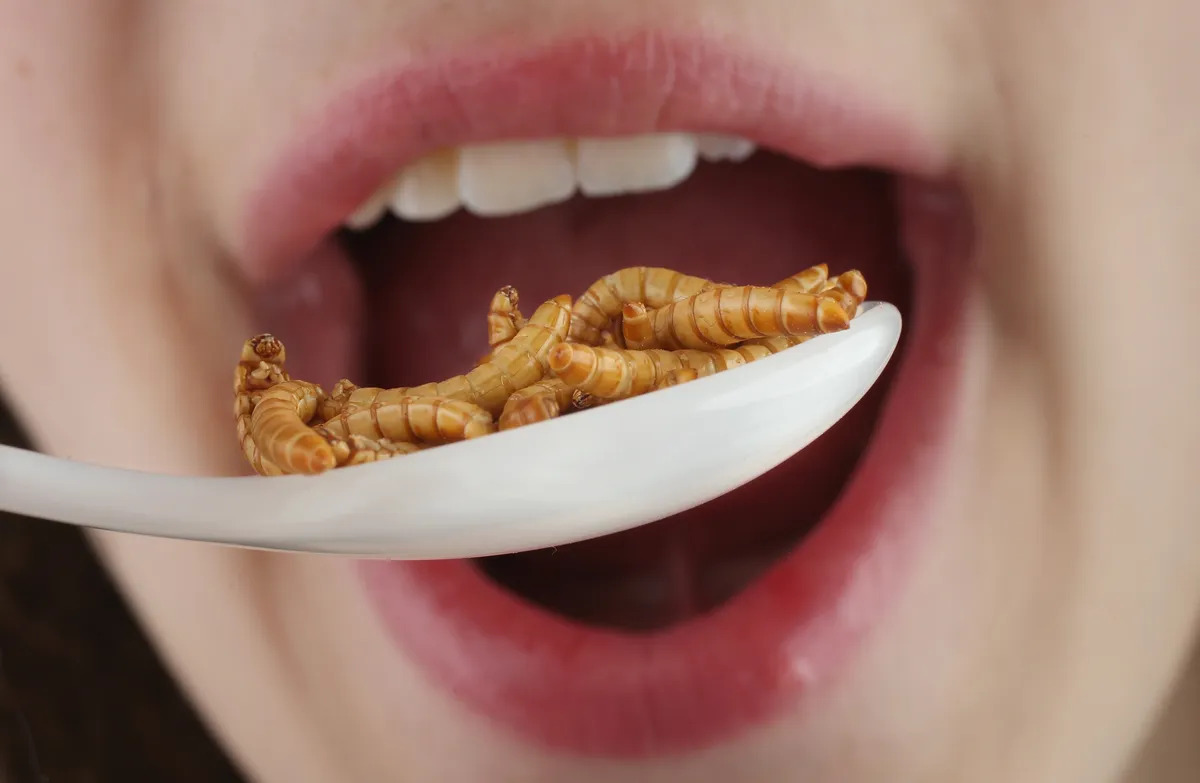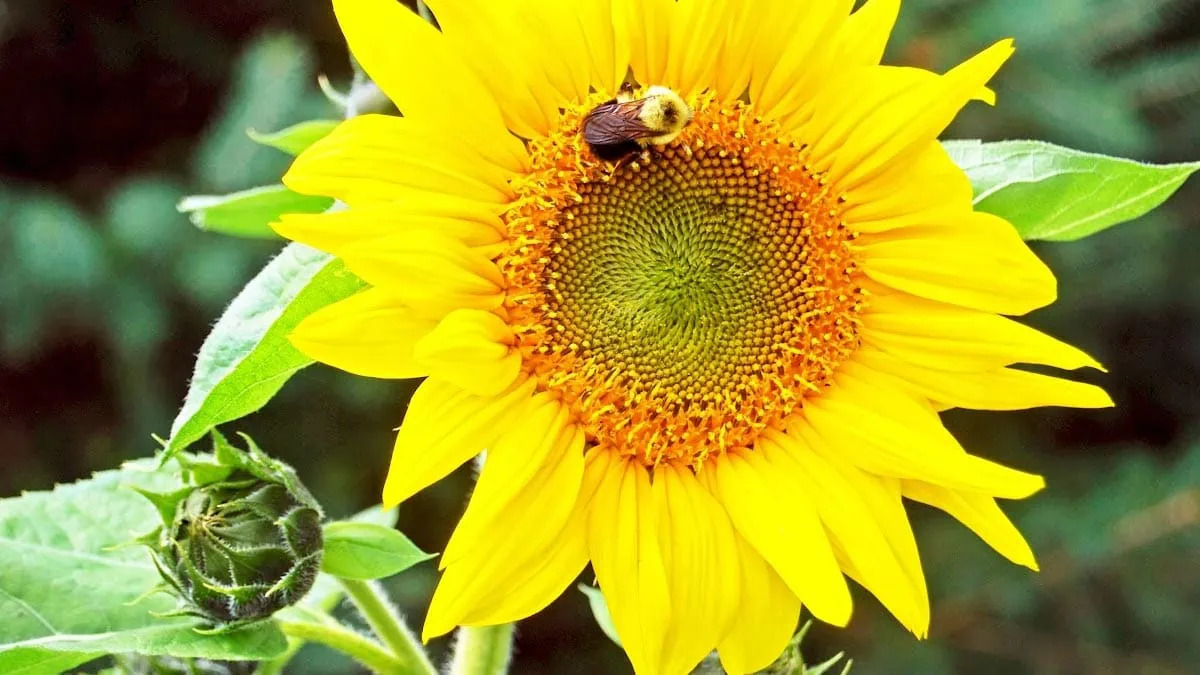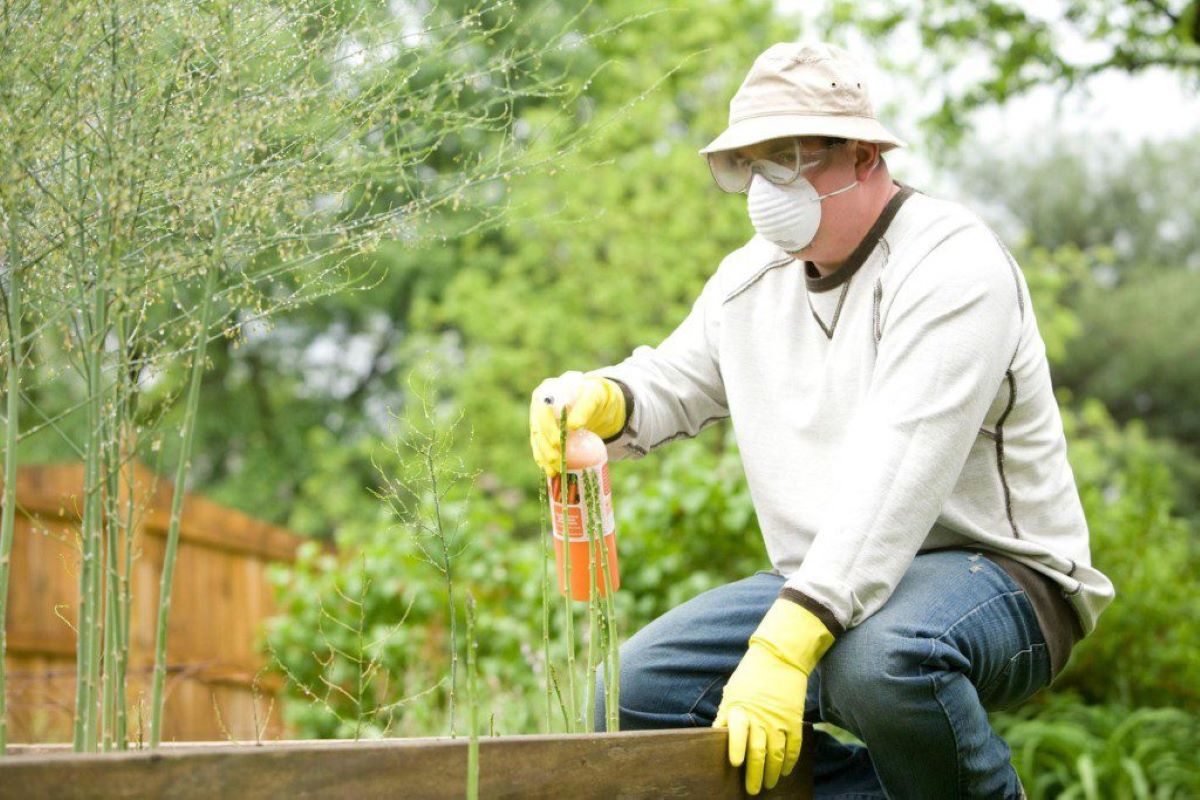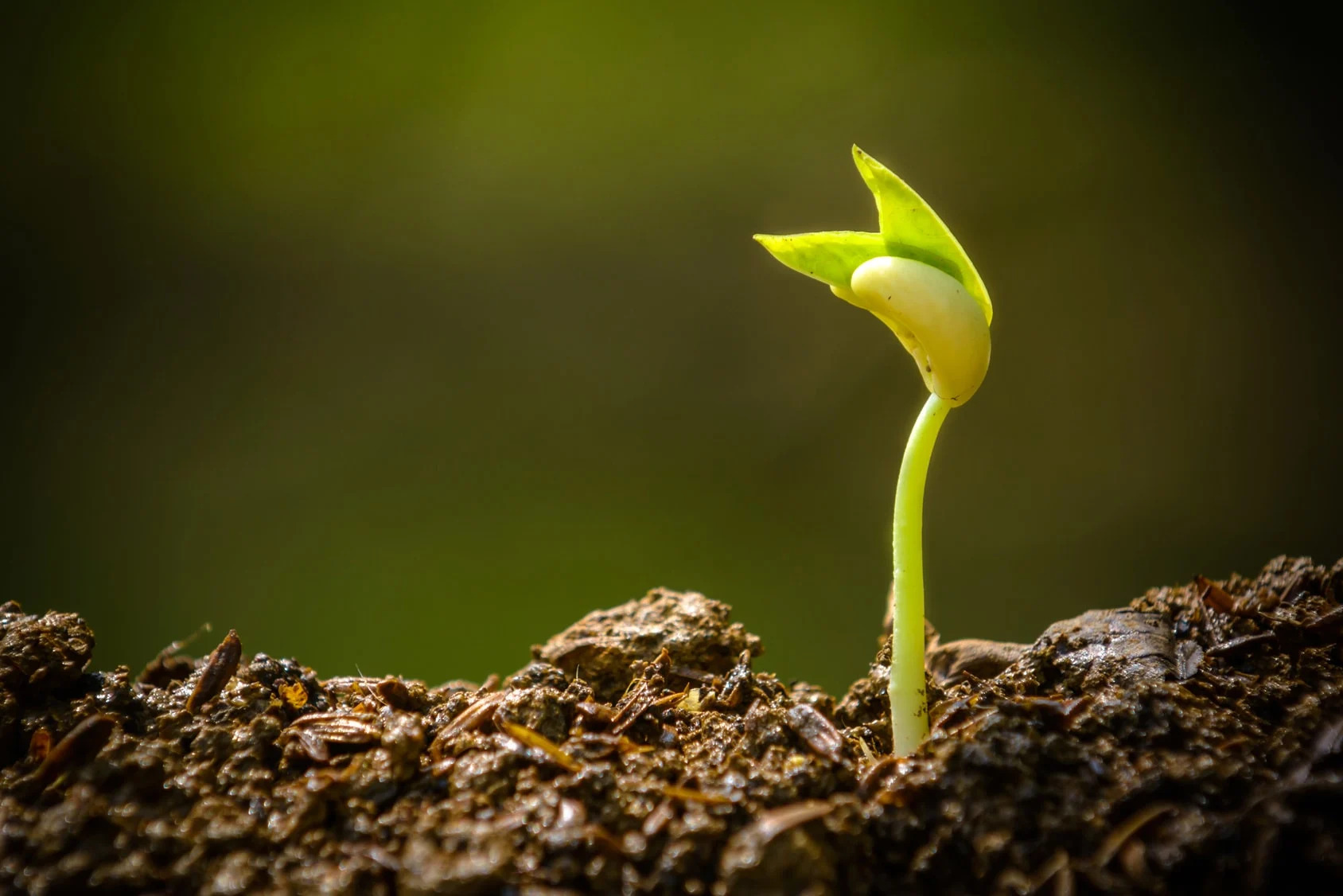Home>Gardening News and Trends>Latest News>How Much Insects Are Allowed In Food


Latest News
How Much Insects Are Allowed In Food
Modified: January 22, 2024
Stay updated with the Latest News on How Much Insects Are Allowed In Food. Discover the regulations and guidelines surrounding the acceptable limits of insects in food products.
(Many of the links in this article redirect to a specific reviewed product. Your purchase of these products through affiliate links helps to generate commission for Chicagolandgardening.com, at no extra cost. Learn more)
Table of Contents
- Introduction
- The Role of Insects in Food
- Legal Regulations and Standards for Insect Content in Food
- Maximum Allowable Insect Parts in Different Types of Food
- Potential Health Risks Associated with Consuming Insects in Food
- Acceptance and Perception of Insects in Food by Different Cultures
- Benefits and Sustainability of Incorporating Insects into Food
- Current Trends and Future Outlook in Insect Consumption
- Conclusion
Introduction
When it comes to food, people have always been conscious of what they eat. From checking the expiration date to inspecting ingredients, consumers want to ensure that the food they consume meets quality and safety standards. One potential concern that often arises is the presence of insects in food.
Insects are commonly found in various food products, especially grains, spices, and processed foods. Although the idea of consuming insects may seem unappealing to some, it is important to note that insects have been consumed by humans for centuries and are even considered delicacies in some cultures.
Understandably, consumers want to know how much insect content is allowed in their food and whether there are any potential health risks associated with consuming insects. In this article, we will explore the legal regulations and standards for insect content in food, the maximum allowable insect parts in different types of food, potential health risks, cultural acceptance, and the benefits and sustainability of incorporating insects into our food supply.
By understanding the role of insects in our food and the regulations surrounding their presence, consumers can make informed decisions about the products they purchase and consume.
Let’s delve deeper into the fascinating world of insects in food, starting with the legal regulations and standards.
The Role of Insects in Food
Insects play a significant role in our food system, both intentionally and unintentionally. While we may cringe at the thought of insects in our food, it’s important to recognize that their presence is often inevitable and can even provide benefits.
One primary role of insects in food is their unintentional presence as contaminants. Insects can find their way into food products during harvesting, processing, or storage. Common examples include weevils in grains, fruit flies on fruits, and maggots in meat. While these contaminations are undesirable, they are relatively harmless and do not pose a significant health risk.
However, certain insects are intentionally incorporated into some food products, particularly in cultures where insect consumption is common. For example, in many Asian countries, insects such as crickets, mealworms, and silkworm pupae are used as ingredients in various dishes. These insects provide a source of protein, vitamins, and minerals and are often praised for their nutritional value.
Additionally, insects can be used as food additives or ingredients in processed foods. Insect-derived compounds, such as cochineal extract derived from the bodies of female scale insects, are used as natural food colorants. Other insects, like the black soldier fly larvae, are used as a source of animal feed or as ingredients in protein-rich food products like bars and powders.
The use of insects in food is not limited to traditional cuisine or specialty products. In recent years, there has been a growing interest in incorporating insects into mainstream food products as a sustainable alternative to conventional protein sources. This approach recognizes the environmental benefits of insect farming, such as lower greenhouse gas emissions, reduced water consumption, and minimal land requirements.
Ultimately, understanding the different roles insects play in our food system allows us to appreciate their significance and make informed choices about the products we consume.
Legal Regulations and Standards for Insect Content in Food
As insects are a common occurrence in food, regulatory authorities have established guidelines and standards to ensure the safety and quality of food products. These regulations specify the maximum allowable limits of insect content in different types of food and provide guidelines for food manufacturers and processors to follow.
In the United States, the Food and Drug Administration (FDA) regulates the permissible levels of insects in food products. The FDA Compliance Policy Guide sets the standards for “Defect Levels Handbook,” which outlines the acceptable limits of natural or unavoidable defects, including insect parts, in various food commodities.
For example, in chocolate, the FDA allows up to 60 insect fragments per 100 grams. For canned and frozen vegetables, the limit is 10% by weight or 30 or more insect fragments per 100 grams. In flour, the limit is 75 or more insect fragments per 50 grams.
Similarly, the European Union (EU) has established regulations for insect content in food under the European Food Safety Authority (EFSA). The EFSA sets guidance levels for the presence of specific insect parts or contaminants to ensure the safety of consumers. These levels vary depending on the type of food product and the specific insect contaminant.
Other countries, such as Canada, Australia, and various Asian countries, have their own national standards and guidelines for insect content in food. While the specific limits may differ, the underlying goal is to protect consumers and ensure that the insect content does not pose a health hazard.
It’s important to note that these regulations focus on unintentional insect contamination rather than intentionally incorporating insects as ingredients. The regulations aim to establish acceptable levels of insect fragments, eggs, larvae, or other insect parts that may be present due to natural processes or unintentional infestations.
By implementing these regulations and standards, regulatory authorities aim to strike a balance between ensuring food safety and recognizing that minor levels of insect presence can be unavoidable in certain food commodities.
In the next section, we will explore the maximum allowable insect parts in different types of food as specified by these regulatory standards.
Maximum Allowable Insect Parts in Different Types of Food
Regulatory authorities have established specific limits for the maximum allowable insect parts in various types of food products. These limits are based on extensive research and aim to ensure consumer safety while acknowledging the presence of insects as an unavoidable reality in food production.
The maximum allowable limits for insect parts vary depending on the type of food product. For example, in chocolate, the U.S. Food and Drug Administration (FDA) allows up to 60 insect fragments per 100 grams. This includes fragments such as legs, wings, and exoskeletons. Similarly, in tomato paste, the limit is 30 or more fly eggs per 100 grams, with no more than two eggs being viable.
In wheat flour, the FDA specifies a limit of 75 or more insect fragments per 50 grams. These fragments can include insect body parts, insect excrement, or fragments of insect eggs. For canned or frozen vegetables, the limit is 10% by weight or 30 or more insect fragments per 100 grams.
It’s important to note that these limits are based on scientific assessments and are intended to ensure consumer safety. They take into account factors such as the toxicity of insect parts and potential health risks associated with their consumption.
The maximum allowable limits may vary in different countries or regions. For example, European Union (EU) regulations set guidance levels for specific insect contaminants. In the EU, the limit for aphid fragments in wheat flour is 3 per 100 grams, while for thrips in dried fruits, it is 3 per 10 kilograms.
These limits are regularly reviewed and updated to reflect the latest scientific knowledge and technological advancements in food production and safety.
While the presence of insect parts in food may initially seem unappealing, it’s important to keep in mind that these limits ensure that the insect content remains within safe and acceptable levels. Most consumers unknowingly consume small amounts of insect fragments on a daily basis without adverse effects.
In the following section, we will discuss the potential health risks associated with consuming insects in food and address any concerns consumers may have.
Potential Health Risks Associated with Consuming Insects in Food
With the increasing interest in incorporating insects into our food, it’s important to address potential health risks associated with consuming insects. While insects are generally safe to consume, there are a few considerations to keep in mind.
One concern is the presence of allergenic proteins in certain insects. Individuals with existing allergies or sensitivities to shellfish or dust mites may also be allergic to insects, as these organisms share similar proteins. It’s advisable for individuals with known allergies to these substances to exercise caution when consuming foods that contain insects.
Another potential risk is the presence of harmful bacteria or parasites in insects. Just like any other food, insects can carry bacteria such as Salmonella or E. coli, or parasites such as tapeworms. Proper handling, cooking, and processing of insects can help mitigate these risks.
Furthermore, the sourcing and farming practices of insects play a critical role in ensuring their safety for consumption. Insects sourced from reputable farms that adhere to proper hygiene and food safety practices are less likely to pose health risks compared to those collected from the wild. It is important to support businesses that prioritize quality and sustainable insect farming practices.
It’s worth noting that insects intended for consumption are often raised in controlled environments, which reduces the risk of contamination and helps maintain a higher level of safety. Many insect farms follow specific guidelines and regulations to ensure the quality and safety of their products.
Although there are potential health risks associated with consuming insects, it’s important to remember that insects have been consumed by various cultures around the world for centuries without widespread adverse effects. When properly sourced, handled, and prepared, the risks associated with consuming insects are minimal.
As with any new food or ingredient, it’s always wise to start with small amounts and monitor your body’s reaction. It’s also important to consult a healthcare professional if you have any specific concerns or underlying health conditions.
In the next section, we will explore the acceptance and perception of insects in food by different cultures and societies.
Acceptance and Perception of Insects in Food by Different Cultures
While the idea of eating insects may elicit mixed reactions in many Western cultures, it’s important to recognize that insects have been an integral part of traditional diets in various regions around the world for centuries. Different cultures have unique perspectives and attitudes towards consuming insects, and it’s interesting to explore how they perceive these edible creatures.
In many Asian countries, such as Thailand, Cambodia, and Vietnam, insects are celebrated as a part of the local cuisine. Fried crickets, grilled mealworms, and roasted silkworm pupae are popular street food snacks. In these cultures, insects are often considered delicacies, valued for their taste, texture, and nutritional benefits.
In some African countries, insects have long been a source of sustenance, especially during times of food scarcity. Termites, caterpillars, and grasshoppers are commonly consumed, providing vital nutrients and protein to local populations. In these regions, insects are readily accepted as a valuable food source.
The perception of insects as food goes beyond cultural acceptance. It is also influenced by factors such as availability, economic considerations, and environmental implications. Insects are highly abundant and readily available in many parts of the world. They require less land, water, and resources to rear compared to traditional livestock. Therefore, incorporating insects into our diets can help promote food security and sustainability.
However, it’s essential to acknowledge that the acceptance of insects in food is not universal. In some cultures, insects are viewed with hesitation or even aversion due to factors like cultural taboos, personal preferences, and perception of cleanliness. Overcoming these barriers and changing attitudes often involves education, awareness campaigns, and innovative food preparations that appeal to diverse palates.
The growing interest in sustainability and alternative protein sources has led to an increasing openness towards insect consumption in many Western countries as well. While the acceptance may still be limited, a significant number of individuals are embracing the idea of incorporating insects into their diets, recognizing the ecological and nutritional benefits they offer.
Public opinion plays a crucial role in shaping the future of insect consumption. As more people become aware of the advantages of insect-based foods and their cultural significance in various parts of the world, societal acceptance and appreciation for entomophagy (the practice of eating insects) may continue to grow.
In the following section, we will explore the benefits and sustainability of incorporating insects into our food system.
Benefits and Sustainability of Incorporating Insects into Food
The incorporation of insects into our food system offers various benefits and sustainability advantages that are increasingly recognized by researchers, environmentalists, and food enthusiasts alike.
First and foremost, insects are highly nutritious. They are rich in protein, healthy fats, vitamins, and minerals. For example, crickets contain all nine essential amino acids and are a good source of iron, calcium, and B vitamins. Incorporating insects into our diets can help address protein deficiencies and provide a sustainable source of nutrition.
In addition to their nutritional value, the environmental benefits of insect farming are compelling. Insect cultivation requires significantly less land, water, and feed compared to traditional livestock, such as cattle or poultry. Insects can be reared using organic waste, such as food scraps or agricultural byproducts, contributing to waste reduction and improved resource efficiency.
Insect farming also has lower greenhouse gas emissions compared to conventional livestock. It has been estimated that crickets, for example, produce around 100 times less greenhouse gas emissions than cattle for the same amount of protein. This reduction in environmental impact makes insects an attractive option for sustainable food production.
Furthermore, the lifecycle of insects is generally shorter compared to traditional livestock, allowing for faster and more efficient production. As a result, insect farming has the potential to provide a more reliable and scalable food source, particularly in regions with limited natural resources and food insecurity.
Another advantage of incorporating insects into food is their versatility. They can be used as ingredients in a wide variety of products, ranging from protein powders, energy bars, and snacks to pasta, cookies, and even insect-based burgers. These innovative food products offer consumers alternative and sustainable options while diversifying culinary experiences.
Moreover, the use of insects as food also aligns with the principles of circular economy and sustainable agriculture. Insects can be integrated into existing food production systems, such as aquaculture, poultry farming, or horticulture, to improve overall sustainability and reduce waste.
Despite the numerous benefits and sustainability advantages, there are still challenges to be overcome, such as scaling up insect farming, addressing regulatory frameworks, and increasing consumer acceptance. However, the growing interest and recognition of insects as a valuable food source provide a promising outlook for the future of entomophagy.
In the next section, we will explore the current trends and future outlook in insect consumption.
Current Trends and Future Outlook in Insect Consumption
In recent years, there has been a noticeable increase in interest and acceptance of insect consumption worldwide. While still considered a niche market, the consumption of insects is gradually gaining momentum and becoming a growing trend in the food industry.
One of the driving factors behind the rise in insect consumption is the growing awareness of the sustainability and environmental benefits. People are becoming more conscious of their food choices and are seeking alternative protein sources that have a lower ecological impact. Insects, with their high nutritional value and low resource requirements, offer a sustainable option that aligns with these sustainability goals.
The popularity of insect-based products, such as protein bars, snacks, and even insect-infused meal kits, has also contributed to the mainstreaming of insect consumption. These products cater to individuals looking for innovative and eco-friendly food options. Companies are capitalizing on the potential of insects by creating tasty and appealing products that make insect consumption more accessible and appealing to a wider audience.
The future outlook for insect consumption is promising. As more research is conducted on the nutritional benefits and safety of insects, regulatory frameworks are likely to become more established and standardized. This will provide clearer guidelines and regulations surrounding insect farming and the use of insects as food ingredients.
Education and awareness campaigns are also crucial in shaping the future of insect consumption. By informing the public about the nutritional value, sustainability advantages, and cultural significance of insect consumption, attitudes and perceptions towards insects as food can continue to evolve and become more favorable.
While insect consumption may still face cultural barriers and aversions in certain regions, the globalization of food trends and the exchange of culinary traditions are helping to bridge these gaps. Increased exposure to diverse food cultures and a willingness to explore new flavors and experiences are likely to contribute to the broader acceptance of insect consumption.
In addition, collaborations between chefs, food scientists, and insect farmers are fueling innovation in insect-based cuisine. Through experimental cooking techniques and creative recipes, they are transforming insects into delectable dishes that challenge preconceived notions and create exciting dining experiences.
The future of insect consumption also extends beyond human food. Insects are being explored as a sustainable protein source for animal feed, further promoting the utilization of insects in a circular and efficient food system.
Overall, current trends indicate that insect consumption is gradually gaining traction as a viable, sustainable, and nutritious food option. With continued research, education, innovation, and evolving consumer preferences, insects have the potential to play a significant role in the future of our food system.
Conclusion
The presence of insects in food has long been a reality, both unintentionally and intentionally. While some may find the idea of consuming insects unappealing, it is important to recognize that insects have been consumed by humans for centuries and are even considered a delicacy in many cultures.
Legal regulations and standards have been established to ensure that the presence of insects in food remains within safe and acceptable levels. These regulations provide guidelines for food manufacturers and processors to follow and ensure consumer safety.
Consuming insects does come with potential health risks, such as allergenic proteins and the presence of harmful bacteria or parasites. However, with proper sourcing, handling, and preparation, these risks can be mitigated. Many cultures have been consuming insects with minimal adverse effects, and ongoing research is further improving our understanding of the safety aspects of insect consumption.
The acceptance and perception of insects as food vary across different cultures and societies. While insects are widely accepted and embraced as a valuable food source in some regions, there is still work to be done to overcome cultural taboos and increase acceptance in other areas. Education, awareness campaigns, and innovative food preparations can help change perceptions and encourage the incorporation of insects into mainstream diets.
The benefits and sustainability of incorporating insects into our food system are significant. Insects are highly nutritious, have a low environmental impact, and can be cultivated using minimal resources. Insect farming offers opportunities for sustainable protein production and addresses concerns regarding food security and ecological sustainability.
The future outlook for insect consumption is encouraging, with a growing trend towards embracing insects as a viable food source. Continued research, regulatory frameworks, and educational initiatives will contribute to the broader acceptance and integration of insects into our food system. Chefs, scientists, and entrepreneurs are pushing the boundaries of culinary innovation, creating insect-based products and experiences that cater to evolving consumer preferences.
As we navigate the challenges and opportunities surrounding insect consumption, it is clear that insects have the potential to play a significant role in shaping a sustainable and resilient future for our food system.








